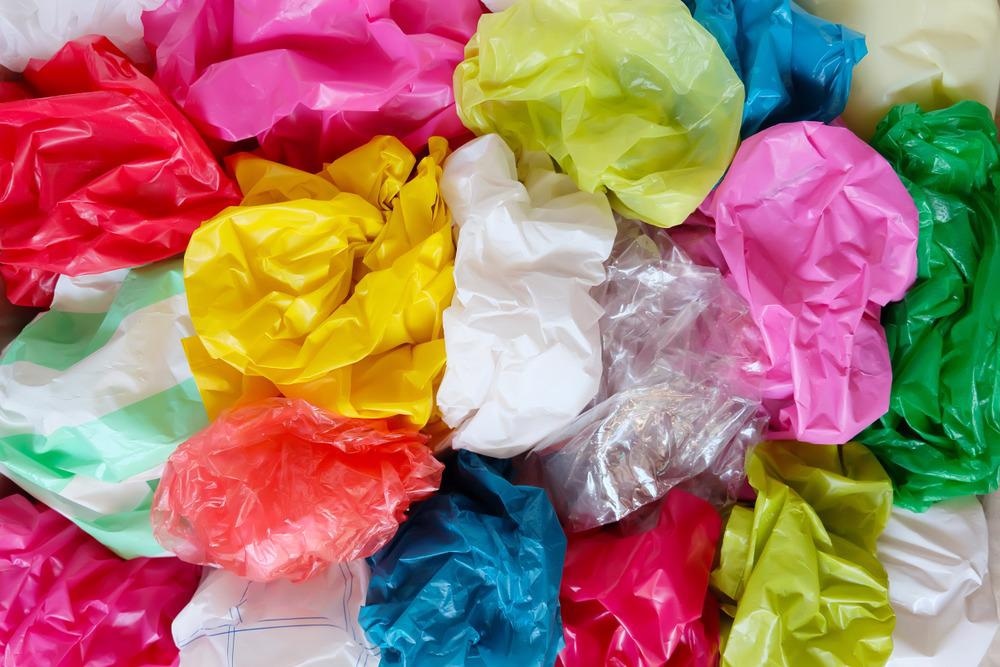Scientists recently created textile fabrics made out of polyethylene – the polymer used in plastic grocery bags as well as many other everyday items – to reduce plastic pollution and make the fashion industry more sustainable.

Image Credit: K.Yas/Shutterstock.com
Massachusetts Institute of Technology (MIT) engineer, Svetlana Boriskina, who worked on the project, said in an MIT news release that plastic bags that nobody wants can be repurposed into high-performance fabrics with a low environmental footprint.
The researchers say that textiles made from these fabrics can be used across the fashion industry, from high-end fashion to sportswear and utility clothing.
Reusing plastic fibers in textiles is more environmentally friendly than using natural fibers like cotton, according to the team behind the research published in Nature Sustainability. Not only this but it can also be effectively recycled again at the end of its life.
Achieving Wicking in a Plastic Fabric
The researchers found that powdering and extruding polyethylene fibers slightly oxidized the material. This changed its surface energy, making the material weakly hydrophilic. In this way, plastic could be made to attract water molecules to its surface.
In a second extrusion step, the team bunched multiple polyethylene fibers together into a weavable yarn. This changed the material’s hydrophilic properties again. Spaces between fibers in a strand of yarn created capillaries that water molecules could be passively absorbed through.
After discovering this wicking ability, the researchers modeled the fibers’ properties in a computer. They found that the material’s wicking ability was affected by the diameter and alignment of fibers throughout the yarn.
The modeling helped the team to create polyethylene yarn that was optimized for wicking properties and placed it on an industrial loom. They then used the loom to weave the plastic yarn into fabrics.
The new fabric’s wicking ability was tested against cotton, nylon, and polyester alternatives. Strips of each fabric were dipped in water, and the team measured how long it took for moisture to wick up each strip. Another test involved weighing the fabric over time to see how long it took for an applied water droplet to wick through the fabric and evaporate.
In all tests, the new polyethylene fabrics performed better than the common alternatives.
The wicking plastic fabric did lose some of its wicking ability with repeated wetting. However, researchers discovered that simply applying friction or exposing the material to ultraviolet light returned it to its hydrophilic state. Boriskina noted that you just need to rub the material against itself to restore its wicking ability.
Is the New Technique Scalable?
Polyethylene is ubiquitous. It is discovered everywhere from plastic bags to food packaging and is often used in single-use applications and discarded. In other words, feedstock for the plastic fabric production process discovered by MIT researchers is abundant.
The yarns created after the second extrusion process can be used in industry-standard large-scale looms.
According to the engineers, the textile they created is silky and lightweight, drapes well, and is comfortable to wear. Crucially, it also wicks and evaporates water away from the skin better than widely-used materials like cotton, nylon, and polyester.
How Adidas Turns Plastic Bottles Into Shoes
More alternative plastic bag uses in the fashion industry. Video Credit: Tech Insider/Youtube.com
Manufacturers will note that fibers can be easily dyed in any color before they are woven into yarns and fabrics.
Consumers will note that it can be washed in cold water. This means clothes made from the material – which researchers say has a smaller manufacturing and distribution carbon footprint than typical alternatives – are even more sustainable.
As well as immediate possible applications in sportswear (sneakers, base layers, and so on), researchers also say that their repurposed plastic bags could be used in a high-performance space suit, capable of protecting people from cosmic radiation in outer space.
Will Plastic Bag Clothing Catch On?
The fashion industry is among the most polluting industries worldwide. Manufacturing textiles consumes massive quantities of water – often in regions where water is scarce, and labor cheap – while generating millions of tonnes of waste. Not only this, but up to 10% of global greenhouse gas emissions are caused by the fashion industry each year.
This is just in the manufacturing and distribution of clothing. Once bought, clothes continue to consume large amounts of energy and water in the laundry. Depending on the method of production, this can even exceed the manufacturing and distribution costs of fashion.
Researchers say that their polyethylene fabric has a smaller environmental impact over their whole life cycle than either cotton or nylon.
The comfort properties of the material – drapability, wicking performance, skin-touch feel – can help to ensure that it is accepted by manufacturers, retailers, and consumers.
In fact, these properties are possibly more important than their environmental credentials. For many in the fashion industry, the plastic fabric still has to overcome public perceptions of being uncomfortable to really take hold – no matter the environmental benefits.
References and Further Reading
Alberghini, M. et al. (2021). Sustainable polyethylene fabrics with engineered moisture transport for passive cooling. Nature Sustainability. Available at: https://doi.org/10.1038/s41893-021-00688-5.
Briggs, H. (2021). Plastic bags recycled into fabric to fight pollution. BBC. Available at: https://www.bbc.co.uk/news/science-environment-56404803.
Chu, J. (2021). Could we recycle plastic bags into fabrics of the future? MIT. Available at: https://news.mit.edu/2021/plastic-bags-recycle-fabrics-0315
Disclaimer: The views expressed here are those of the author expressed in their private capacity and do not necessarily represent the views of AZoM.com Limited T/A AZoNetwork the owner and operator of this website. This disclaimer forms part of the Terms and conditions of use of this website.